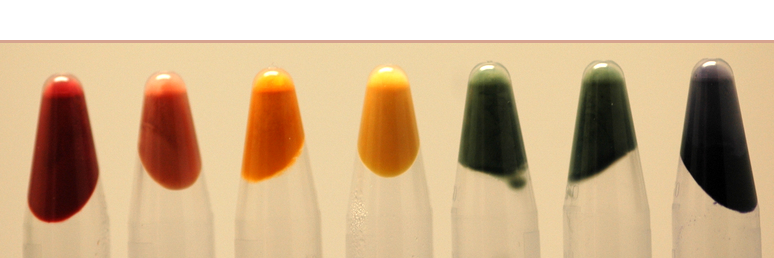
Next term I'm taking a short course on plastid evolution (e.g chloroplasts), as it was the choice that came closest to my beloved bacteria. While I hold no great love for the inner workings of multicellular creatures, I'm forced to admit that there is something quite special about eukaryotic cells. They're full of little compartments, closed off organelles and selfishly horded genomes, including
bacterial genomes within their mitochondria and chloroplasts. Also
Psi Wavefunction writes about plastid-containing things a lot, and has convinced me that while they'll never be bacteria, they are pretty amazing in their own right.
The theory of endosymbiosis is that mitochondria and plastids (pigmented organelles such as chloroplasts) were once free-living bacteria-type organisms, which were engulfed by larger cells. Rather than being subsequently digested, these organisms managed to survive inside the larger cells, providing energy for them in return for a safe place to stay:

Diagram 'borrowed' from last years lecture notes
However this state of affairs immediately creates a problem. Not one of space, or resources, but of nuclei. Two nuclei are now present in the same organism, creating problems of control. The plastid cannot simply divide, replicate and produce energy whenever it wants, and the same is true of the surrounding cell, the two must work together, which means putting at least some of their genes under the same system of central control.
What usually happens is that over time the internal plasid's genes migrate to the nucleus of the surrounding organism (although apparently some protists will hold fairly epic genomic battles about who ends up with the majority of the genome). Genomic analysis shows the plastid or mitochondrian genes sitting happily in the nucleus, although the organelle will retain some of its genes in it's own little chromosome, probably for the same reason that the USA remains a federal government.
Doing further genetic analysis however, particularly on the
chromalveolates (a large group of protists which include, among others, the red-tide producing
dinoflagellates and the photosynthesising marine
diatoms) shows that the story is not quite so clear cut. The chromalveolates are believed to all originate from an ancestor containing an engulfed red-algae plastid for photosynthesis. Analysis of the genome of the diatome
P. tricornutums does indeed show red algal genes, however it also shows genes from
green algae. In fact, large-scale phylogenetic analysis of algae and diatoms revealed over 1700 green algae genes in the
P. tricornutums nucleus,
outnumbering the red algae genes.
How did they get there?
One theory presented is that this diatom has in fact had two endosymbiotic events in its past; a green algae that later somehow disappeared or was lost, and then the red algae. However as there are many different branches of the chromoveolates containing varying amounts of red/green algae material this seems to make a rather large assumption about the ease of endosymbiosis...it sounds like algae are being absorbed and lost surprisingly easily, and quickly. The discovery that some chromoveolates without any plastids
also have plastid genes in their nucleus doesn't help matters. How are the genes getting in, and is multiple rounds of endosymbiosis, followed by subsequent plastid loss really a realistic answer?
There are other explanations, although as yet no real answers. Green algae are not the most well-sampled of organisms, and the genomic record is distinctly patchy. This makes it a lot harder to determine where genes truly come from. Also there is the matter of horizontal gene transfer. Before being engulfed by the chromalveolates, the algae would have been able to share genes in much the same way bacteria do. The green algae genes might have got into the red algae
before they were engulfed.
Horizontal gene transfer can also occur in some ciliates, which may explain the presence of plastid genes in their nucleus, despite the fact that they don't
have any plastids. Ciliates often form symbiotic relationships with algae. This means that they will often come into contact with lysed algae, and may have been able to pick up genetic material from them. There also may be a certain 'background' of algae-like genes which in reality have nothing to do with algae. Some plastid-like genes have been found in amoeba, which really
don't have any reason to have them, so it might just be an artifact.
Even so, the evolution and origin of plastids is clearly a wonderfully convoluted and undetermined area. Away from the weirdness of algae-containing protists there are still many questions to be answered. In the plant model-organism arabidopsis there is still a fascinating interplay between the genomes of the chloroplast and the nucleus. The chloroplast uses several nuclear genes that it never even supplied in the first place, it seems to have hijacked some of the nuclear genes for it's own purposes. The arabidopsis nucleus has returned the favour, with less than half of the genes supplied by the chloroplast being used for chloroplast-related purposes.
I can't wait to start studying it. (Especially because it means the endlessly boring set of 'techniques' lectures will finally be over.)
---
Elias M, & Archibald JM (2009). Sizing up the genomic footprint of endosymbiosis. BioEssays : news and reviews in molecular, cellular and developmental biology, 31 (12), 1273-1279 PMID: 19921698
















































